Genesis of the Vanguard design
It should be tempting to reduce HMS Vanguard to a solution for “reusing old turrets”. A monitor could have done the job just as well for a fraction of the price. The truth is that the design went by leaps and bounds with a real theater in mind: The Pacific. Its development story thus went well beyond the simple opportunity as the cost of building a new battleship “minus turrets” was certainly not anecdotal. It is also a good way to vizualize what could have been the cancelled Lion class, if evolved further. In the end, the design also incorporated lessons from WW2 and certainly was the most advanced battleship the Royal Navy ever had. Only the postwar context was unkind for her type, with a short service in the end. One could only imagine of she was modernized the same way as the Iowas and deployed in the Falklands…
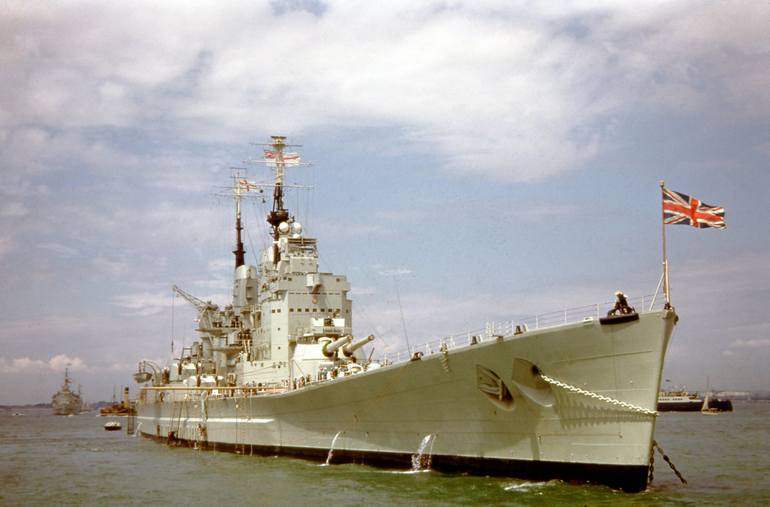
By early 1939, the Royal Navy was sure that the first two Lion-class battleships (A modified version of the King Georges V with three triple turrets) would not be delivered before 1943 at best. Further battleship construction were necessary to match German and Japanese capital ships plans and construction. There were however two constraints for building new battleships, a limited capacity already, the time required to new guns and turrets was also a factor. Thus the use of existing twin 15-inch turrets was seen as an advantage already. There were enough to justify the construction of a single fast battleship, and some estimated, faster than Lion-class.
The turrets were built for the Courageous and Glorious back in WW1, of the same trusted 15-in type famously used on the whole ten Queen Elisabeth and Revenge classes. These turrets were removed during conversion to aircraft carriers. Thus, the admiraty retook the Lion class design and just changed the turret rings layout to accomodate instead of three large ring mounts, four smaller ones. Preliminary design work started by July 1939 and it was decided to keep the transom stern present on the Lion class also, as it was known at the time to improve top speed by 0.33 knots (0.61 km/h; 0.38 mph) at full regime. So at the time, there were two competing battleship construction projects: The Lion class, which new triple 15-in turrets would take time to complete, and Vanguard, hopefully ready to be completed earlier based on the same general plans.
The start of the war however completely obliterated any progress: Design work was indeed suspended on 11 September. By order of First Lord of the Admiralty Winston Churchill however it was resumed in February 1940. The design however was modified in light of recent lessons: Protection against shell splinters on the hull’s sides were to be bolstered, armour of the secondary armament also improved in order to resist new 500-pound (230 kg) SAP (semi-armour-piercing) bombs and the outer belt had its thickness reduced fore and aft by 0.5 inches (12.7 mm) to compensate for this rise. It was decided to add a small conning tower aft, and to fit as extra AA assets, four Unrotated Projectile mounts on top of the turrets. This came in addition to the already planned six 8-barrel 2-pounder “Pom-pom” AA mounts.
Preliminary design work was suspended in June 1940 due to the general situation, and resumed in October as the battle of Britain was won. It was modified again, incorporating more war lessons: It was decided to auglent the fuel capacity and increase again the armour protection. These detail changes had an impact on the draught, which fell below 34-foot (10.4 m), precluding any use of the Suez Canal, and thus, use in Asia. The main belt was reduced by 1 inch (25 mm) as compensation while to gain extra buoyancy, the beam was increased by 2.5 feet (0.76 m), in order to preserve the draught limit. Now this fell at odds with the docks at Rosyth and Plymouth and reduced the numbers available in case. The Board of Admiralty validated these last changes by 17 April 1941 while the order alredy had been made for construction from 14 March, as part of the 1940 Emergency War Programme. John Brown & Company was contracted to built her, and only obtained the drawings later in April.
Design of the class

Despite construction was ordered, the design continued to evolve: Even during construction in early 1942, lessons were learned after the loss of HMS Prince of Wales. It was decided the following:
-The longitudinal distance between inboard and outboard propellers rose from 33.5 to 51.5 feet (10.2 to 15.7 m) to avoid a single torpedo hit consequences
-Watertight access trunks added to all spaces below the deep waterline to stop flooding via open watertight doors/hatches
-Relocation of some of the 5.25-inch (133 mm) ammunition handling rooms in the middle deck
-It was specified that “A” turret could fire straight ahead at 0° elevation, but due to freeboard issues and seaworthiness, this was dropped and the bow was increased, with a slope far more important than on the KGV class. It was already reported that the KGV tended to be very wet forward and ploughing heavily in high seas.
-The fuel rose to 4,400 long tons (4,500 t) to 4,850 long tons (4,930 t) as it was learned after the Bismarck chase, range limitations of King George V and Rodney nearly saved the German battleship.
-The Unrotated Projectile mounts were deleted
-76 2-pdr pompom added (1x quad, 9 octuple), 12×2 Oerlikon 20 mm AA guns.
-Walrus floatplanes eliminated as well as catapult and hangars
These were decided as the hull was already well advanced, and work had to be stopped and partly scrapped to make the changes. This seriously delayed the ship’s completion.
Vanguard as an armoured carrier:
In fact these delays were such a concern as the completion date continued to shift further, that the hull was converted into an armoured aircraft carrier. It made sense given the recent experiences of the Illustrious class in the battle for Malta. The Director of Naval Construction (DNC) prepared a short plan based on the Audacious class conversion, stated it would require six months to redesign the ship, delaying further the actual completion so this was formally rejected on 17 July. Eventually Vanguard was launched on 30 November 1944. This was already quite late, and due to numerous other priorities, her completion date continued to slip. In effect, she would escape narrowly pure cancellation, especially after September 1945. Despite all odds, she was too advanced to be scrapped and the new government, under pressure from the admiralty, agreed to finance her completion, until commissioned on 12 May 1946.
Hull and general design
HMS Vanguard became the largest and fastest British battleship ever built. Overall she measured 814 feet 4 inches (248.2 m) for a beam of 107 feet 6 inches (32.8 m), her draught eventually reaching 36 feet (11 m) deeply load. In betwee, the Suez canal was dredged to accept deeper draught ships. Her final displacement rose to 44,500 long tons (45,200 t) standard, and 51,420 long tons (52,250 t) deep load. In practice she was even larger than Bismarck, for the exact same armament. With 50 feet (15.2 m), 6,000 long tons (6,100 t) more than the KGV, she set a new record for British naval construction. She was also the heaviest warship ever built in Britain, as the late fleet carriers such as the Malta class were cancelled. She ended overweight by some 2,200 long tons (2,200 t).
Unlike the precious KGV she did not suffered heavy weather issues with her bow, which was given not only a raised portion, but also a significant sheer and flare. Her seaworthiness was considered on sea trials excellent, she managed to keep an even keel in rough seas. Fully loaded, her metacentric height was 8.2 feet (2.5 m), which was quite reasonable as well.
She as designed to act as fleet flagship, with an intensive complement of 115 officers and 1,860 men as planned by 1947. Livability was much improved due to greater dimensions, the better seaworthiness, and Air conditioning installed in all control spaces, asbestos insulation in exposed areas on the sides, decks and bulkheads. Knowinf the freezing conditions in the North Atlantic, there was even an electric heating provided for her armament, all instruments and look-out positions as per the Arctic Murmansk convoy experience. Also knew compared to the KGV, she had like on US battleship, an Action Information Centre installed below the main armour deck. It had all facilities to track aircraft and ships, connecting all sensors and weapons control stations aboard the ship, plus the bridges (command and admiral bridges).
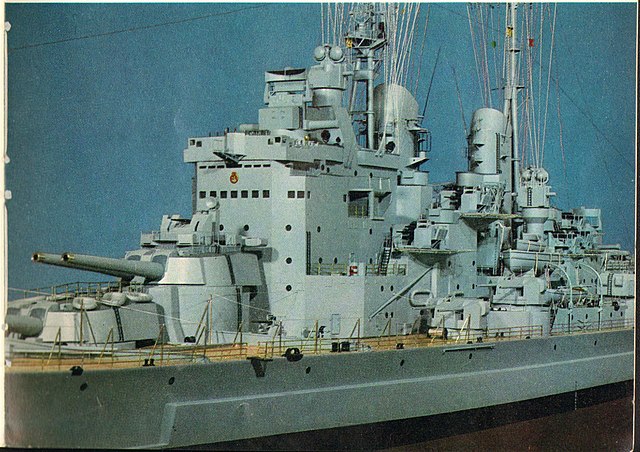
Now superstructure-wise, she resembled previous battleships by her general silhouette, with a blockhouse forward, slanted on the seven story tall bridge, which ended with an enclosed admiralty bridge and open command bridge above. The bridge towered well above the “B” superfiring turret. This was one of the striking aspect of the design, as she so large in proportion to her turrets the latter happened not as large, especially in relation of the previous battlecruisers. The bridge supported the two main fire control director, the second one in an upper position for the secondaries, and the second one installed on the aft structure. She had two tripod mast, but “inverted” in the sense the vertical pole was aft and the legs forward.
She also had two funnels, which looked slim and modern with their caps compared to the ones of the KGV. The tripod foremast was larger than the aft one, supporting the main aerials. See further down for the electronics aboard.
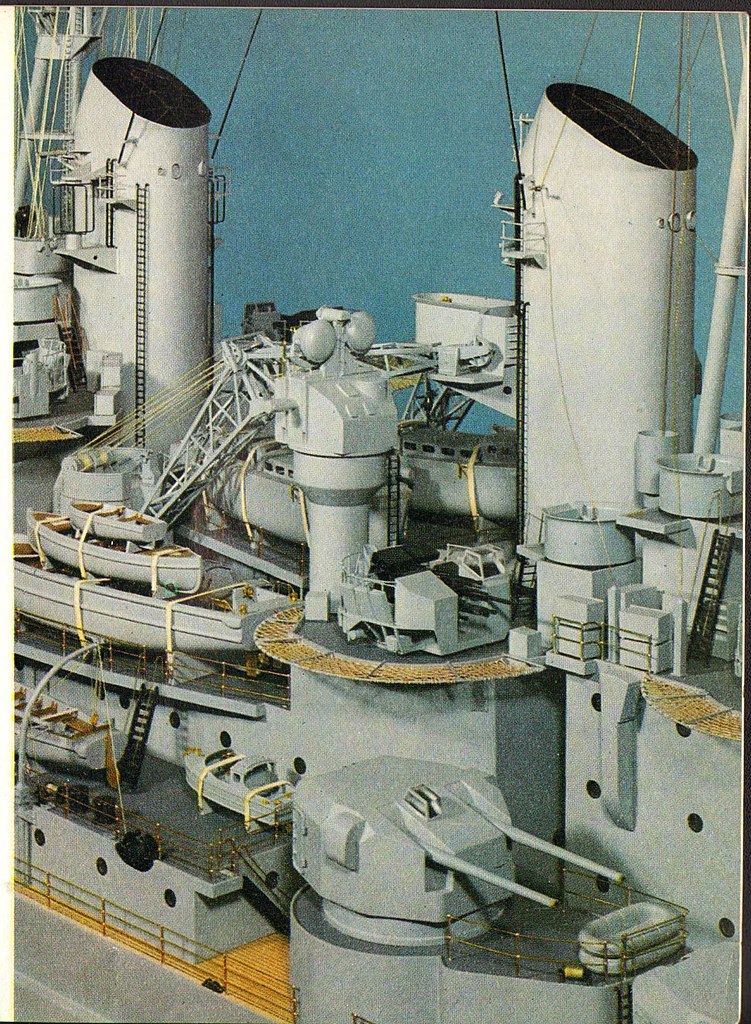
The secondary artillery made no debate and was placed like on the previous design in four superfiring positions fore and aft. The octuple pompom mounts were placed around the main bridge and aft structure. The latter was still relatively tall and supported the last directors. Services boats (One large cutter, two small, two yawls, two pinnaces) were installed in between structures, freeing space for the AA on the rear ones, and served by two lattice gooseneck cranes.
The hull, in addition to the forward flare, three anchors with internal logdings, transom stern and few portholes, looked modern. The prow was slanted, with a more pronounced angle than on the KGV. The counter-keels were placed about the same, but longer. The four shaft afts were straight and supported by struts. The rudder was single and a bit larger than on the KGV, with a backup steering system in case of flooding.
Armour protection layout
The armour scheme was a repeat essentially of the King George V’s, however with the changes started above. There was a thinner waterline belt but additional splinter protection for the hull’s sides. The thinner belt was for weight reduction, reaffecting extra protection eslewhere.
Main Armoured Belt:
This waterline 460-foot (140.2 m) main belt was external, and made of Krupp cemented armour (KCA) made in Britain under licence, and 13 inches (330 mm) thick, then up to 14 inches (356 mm) abreast the magazines. This belt was 24 feet (7.3 m) high, tapering down to 4.5 inches (114 mm) at the bottom edge.
Main citadel bulkheads:
The sides of the citadel were enclosed by two 12-inch (305 mm) so same thickness fore and aft for the transverse bulkheads. There was a secondary belt going up to both ends.
Forward outer belt: 2 inches (51 mm) over 8 feet (2.4 m) high, above and below the waterline.
Aft outer belt: 2 inches, over 11 feet (3.4 m).
Aft end of the steering gear compartment: 4-inch (102 mm) transverse bulkhead.
Magazines protection: 1.5-inch (38 mm) non-cemented armour bulkheads.
The latter were there to protect magazine from splinters resulting from plunging shells that penetrated beneath the belt. This did not existed on the KGV ships.
Main gun turrets: The WW1 battlecruiser turrets were modernised, with KCA (Krupp Cemented Armour) front plates made 13 inches thick, roofs now having 6-inch (152 mm) non-cemented armour plating and sides maintained at 7–9 inches (180–230 mm).
Main barbettes: 13 inches thick (sides), 11–12 inches (279–305 mm) closer to the centreline due to existing armour around.
Secondary 5.25-in Turrets: No changes compared to those of the KGV. Sides and roof armour 2.5 inches (64 mm) thick. Ammunition hoists 2–6 inches (51–152 mm).
Main armoured deck (waterline):
Calculated to withstand a 1,000-pound (450 kg) AP bomb hit from 14,000 feet (4,300 m), same as KGV, 6-inch non-cemented armour over the magazines, 5 inches (127 mm) over machinery spaces.
Outer citadel deck, Forward: From 5 to 2.5 inches.
Outer citadel deck, Aft: Over the steering gear, propeller shafts: 4.5 inches down to 2.5 inches at the stern.
Conning tower: The concept was abandoned and if it was still there, thickness was down to only 3 inches (76 mm), face 2.5 inches sides and rear.
Secondary aft conning tower: 2 inches (51 mm), sides.
Underwater protection: Redesigned in 1942 (Prince of Wales loss): Three-layer with voids/liquid-filled compartments, blast absorbing.
-1.75–1.5-inch (44–38 mm) torpedo bulkhead.
-Enlarged oil tanks and greater more, better pumps.
-Longitudinal bulkheads raised one deck higher to subdivide spaces behind the waterline belt.
-Side protection, full, 15 feet (4.6 m) wide. Narrowed on both ends. Citadel: Full-width. Proof against 1,000 pounds (450 kg) TNT warheads.
-Double bottom, 5 feet (1.5 m) deep divided into 27 main compartments, all closed by watertight bulkheads.
Powerplant
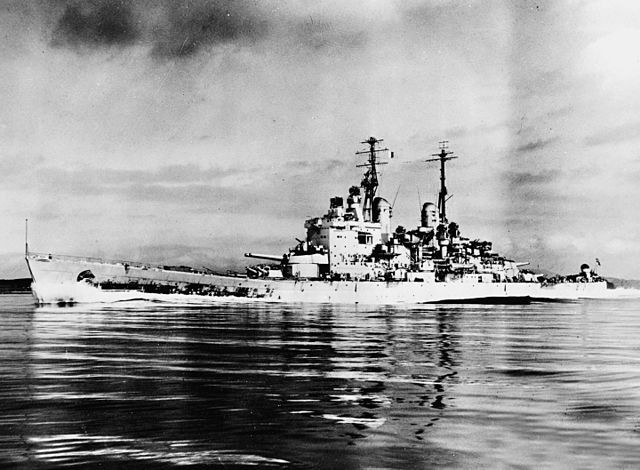
Sea trials in 1946
This was probably the less ambitious part of the design. To save time, the four-shaft from the Lion-class was duplicated. Like on the KGV it presented alternating boiler and engine rooms. The four shafts were driven by four sets of single-reduction geared Parsons steam turbines, housed in separate engine rooms. Each turbine was composed of a high-pressure section, and a low-pressure turbine. Propellers were those prepared for the Lion class, derived from those of KGV. All four measured 14 feet 9 inches (4.5 m) in diameter.
The turbines were fed by eight Admiralty 3-drum boilers. Two per boiler rooms, four in all. They worked at a pressure of 350 psi (2,413 kPa; 25 kgf/cm2) up to 700 °F (371 °C).
Total output calculated was 130,000 shaft horsepower (97,000 kW) and top speed 30 knots (56 km/h; 35 mph).
On trials, they were pushed to 136,000 shp (101,000 kW) by July 1946, resulting in 31.57 knots (58.47 km/h; 36.33 mph), the best speed obtained by any British Battleships before or since.
After trials, the three-bladed propellers inboard were replaced by five-bladed onces as a result of observed vibrations, but this did not alleviated the problem. Vibration would remain.
As for autonomy, HMS Vanguard was tailored to carry 4,850 long tons of fuel oil, 427 long tons (434 t) of diesel fuel. She was calculated to steam economically at 15 knots (28 km/h; 17 mph) over 8,250 nautical miles (15,280 km; 9,490 mi) thanks to the additional fuel storage managed into her cavrenous hull. The thick oil was also used as a buffer in ant torpedo hit, participating in the sides protection. In addition, to run her electric, electronic systems when cold, she could count on four 480-kilowatt (640 hp) turbogenerators plus four backup 450-kilowatt (600 hp) diesel generators that also fed the pumps. They were all setup on a common ring main rated at 220 volts. Total eletrical output was 3,720 kilowatts (4,990 hp), the largest of any British battleship, but this was necessary between the increased AA, command facilities and better, more powerful radars she carried.
Armament
Main
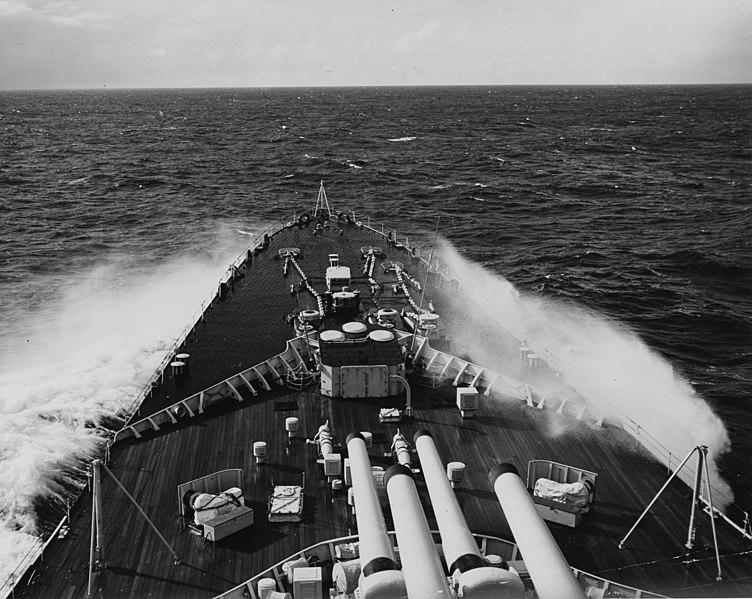
The main armament comprised so the eight 42-calibre BL 15-inch Mk I guns of the two battlecruiser, with some armour upgrades for their twin hydraulically powered gun turrets. They were as usual named “A” and “B” for the superfiring forward pair and “X”, “Y” for the aft one. Loading was done at +5° originally but the cradled were modernized to the Mk I(N) RP12 design, following the ones done ofnt Queen Elisabeth class. Thus, maximum elevation rose to +30°, ten more than the originals.
The 1,938-pound (879 kg) shells carried were a modernized version of the originals as well, with a muzzle velocity of 2,458 ft/s (749 m/s) and range of 33,550 yards (30,680 m) at 30°. Supercharges could be used to bring this to 37,870 yards (34,630 m) but this of course reduced the barrel’s life. Rate of fire was two rounds per minute and 100 shells per gun were carried, 400 in all aboard in four separate and well protected ammunition storage tooms with improved antiflash doors and sprinklers, or quick flooding valves.
At the origin the magazine were to be located above the shell room, and the contrary was adopted after the Battle of Jutland. In the en, Vanguard received a powder-handling room above the shell room and a second set of hoists moved propellant charges from the magazines to the powder-handling room while charges were stowed in cases to protect them from fire.
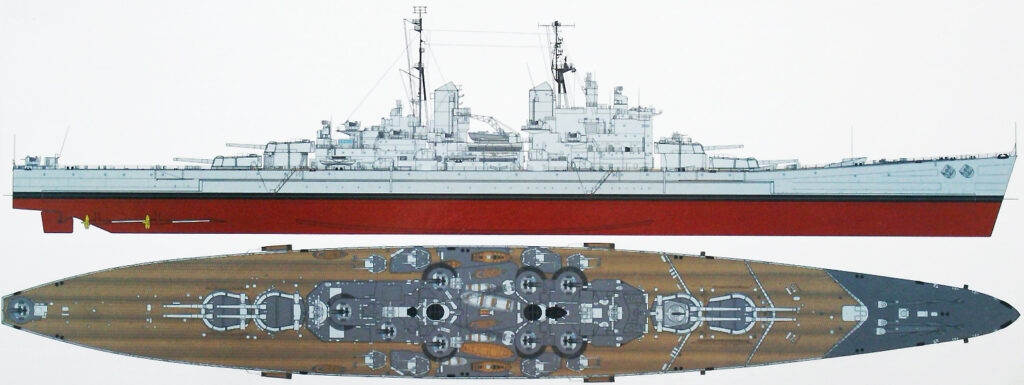
2-views of the Vanguard in 1953 – Kagero series profile, Casemate Publishers.
Secondary
The secondary armament was a repeat of the KGV by default of a better design. This consisted in sixteen QF 5.25-inch Mk I*/50 dual-purpose guns. They were located in superfiring pairs amidships, in all eight twin gun mounts. Maximum depression was −5°, maximum elevation 70° and fired a 80-pound (36.3 kg) HE shell at 2,672 ft/s (814 m/s).
The ones carried by the Dido class proved a failure, and engineers had plenty of time later to improved these. The ones carried by Vanguard were thus the improved RP10, fully automatic as using apower-rammed breech, automatic tracking/elevation slaved to radar control. Rate of fire was thus up to 18 rounds per minute and they could fire in indirect fire up to 24,070 yards (22,010 m). Each turret had a total of 391, so 3128 total, HE without fuses.
AA: Final All-Bofors armament
Close quarter defence rested on nothing less than 73 Bofors 40 mm AA guns, instead of 2-pdr Pompom. Thet were proven superior and came in a variety of mountings to better fit available spaces:
-Ten sextuple-barrel RP50 Mk.I mounts, installed in the superstructure and stern.
-Single twin-barrel 40mm/60 STAAG mount on “B” turret
-Eleven single mounts on the upper deck, rear superstructure.
-Four single 47mm/40 Mk I saluting guns.
The Bofors mounts could elevate to +90° and fire a 1.97-pound (0.89 kg) shell at 2,890 ft/s (880 m/s) to 10,750 yards (9,830 m). Rate of fire was 120 rounds per minute but ammunition storage was somewhat reduced to 1,269 rounds per gun. In 1949 removal of quartedeck guns was gollowed by five more in 1954 and other when it was recoignised they were no help against modern jets. Some argues that they could have received twin 3-in US mounts but by 1955n the fate of Vanguard was already sealed. So in 1947 a twin was removed and then fitted again later that same year, in 1951, nine single Bofors were removed, in 1954 on sextuple mount, while twi single Mk VII replaced it, and by 1956 four single Bofors 40mm/60 were also removed.
Sensors and fire control
Vanguard being the most modern British battleship, she was the first to hace remote power control for her main, secondary and tertiary guns. She was also the first to feature the new Admiralty Fire Control Table Mk X for surface fire control, main.
-Main guns were under control of two director control towers with the “double cheese” Type 274 fire-control radar (rangefinding/splash spotting) and each of the two could control all four turrets in case one was disabled. Some turrets also had their own telemetric directors, and as thus, “B” and “X” turrets could control their deck counterparts, “A” and “Y”.
After modernization the 15-foot (4.6 m) rangefinders were replaced by 30-foot (9.1 m) ones while “A” only had azimuth RPC, but all had a de-humidifying equipment/insulation.
-The secondary guns were controlled by four US Mark 37 directors, same used for the 5-in/38, giving full satisfaction. Each of these carried the twin domes Type 275 radar.
-Each Mark VI sextuple Bofors mount had its own, separate CRBF (“close range blind fire”) director assorted with a Type 262 radar, at least on paper. It seems not were equipped after completion.
-The STAAG Mk II 40 mm Bofors were slaved to a Type 262 radar placed on the mounting.
The main and aftmast also carried the following:
-Type 960 air and surface search
-Type 293 target indication radar
-Type 277 radar height finding radar.

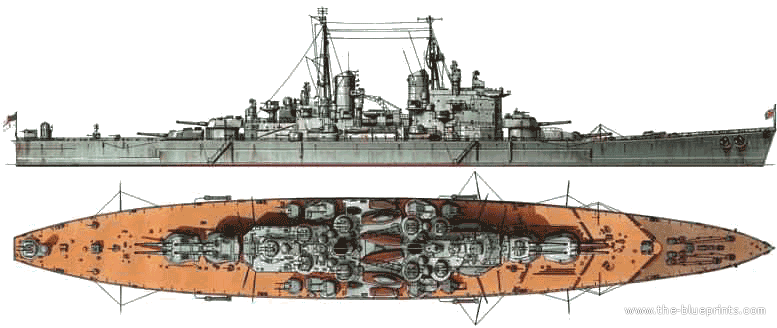
⚙ Vanguard specifications 1949 |
|
| Displacement | 44,500t standard, 51,420t FL |
| Dimensions | 231.6 pp/248.2 oa x 32.9 x 9.38m (814 ft 4 in x 108 ft x 36 ft) |
| Propulsion | 4 sets Parsons geared steam turbines, 8 Admiralty 3-drum boilers, 130,000 shp |
| Speed | 30 kts (56 km/h; 35 mph) |
| Range | 4,423t oil, 8,250 nm at 15 kts or |
| Armament | 4×2 15-in/42 RP.12 Mk I/N, 8×2 5.25/50 RP.10 Mk I, 72 Bofors, see notes |
| Protection | Belt 4.5–14 in, Deck 2.5–6 in, Barbettes 11–13 in, Gun turrets 7–13 in, CT 2–3 in, Bulkheads 4–12 in |
| Sensors | Type 960, Type 293, Type 277, 2× Type 274 FCR, 4× Type 275 FCR, 11× Type 262 FCR |
| Crew | From 1893 to 1975 as flag |
Career of the last British Battleship
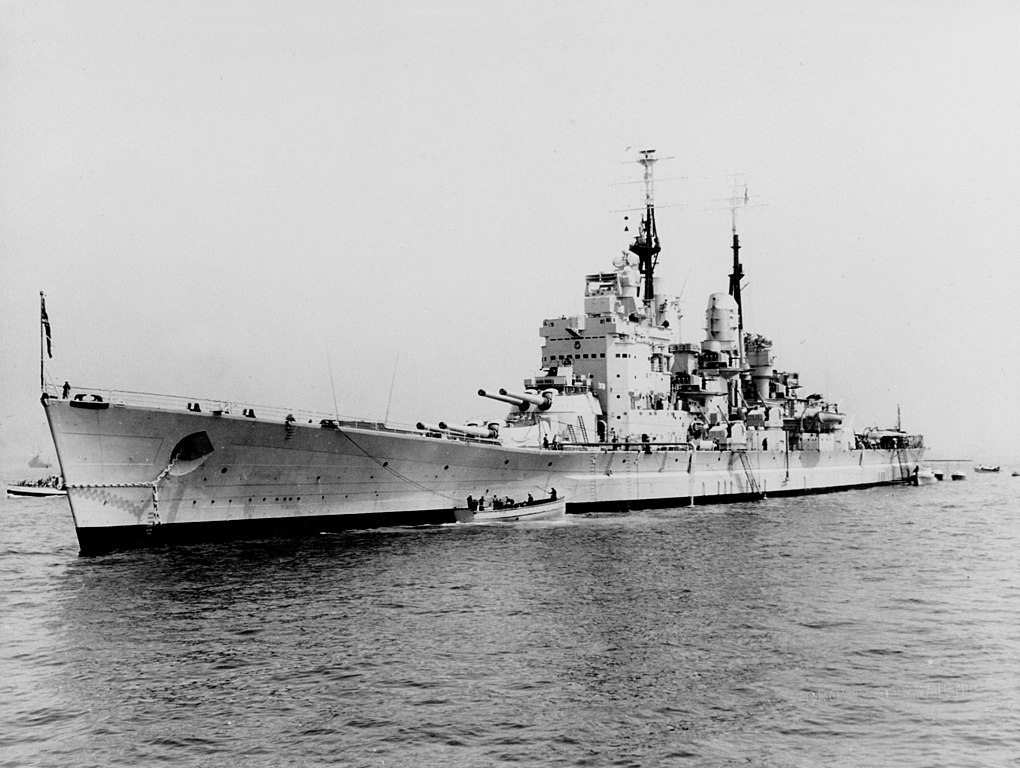
Vanguard as completed, Yard official photo, 1946
HMS Vanguard, laid down on 2 October 1941 at John Brown NyD in Scotland, numbered 567 was given A1 priority to have her completed by 1944, while the cruiser HMS Bellerophon and merchant ships saw their construction suspended, but still, labour shortages had the ship launched by 30 November 1944, way after first intended. Princess Elizabeth was present at the ceremony, first she launched diamond. On 16 September 1945 the ship underwent a “blinding explosion ripped” killing two yard workers, injured six while fitting-out at Clydebank and Captain William Gladstone Agnew supervised the last operations when taking command by 15 October 1945. But with Japan’s surrender, work was stopped. It only resumed after much admiralty pressure and she was eventually commissioned until 12 May 1946 for a total cost of £11,530,503, £3,186,868 for her new main armament alone.
After sea trials and training until August 1946 she became royal yacht for a tour in South Africa with the Admiral’s suite completely revised to become Royal accommodations and the “B” turret AA mount replaced by a saluting platform with four saluting guns. Cdr Agnew became rear-admiral on 8 January 1947 and Vanguard started her shakedown cruise to the Central Atlantic, stopping at Gibraltar, and under escort of the destroyers Orwell, Obedient, Offa, Opportune, and Rotherham. She joined the Home Fleet on 1 February 1947 for a salute led HMS Nelson and Duke of York, while soon after testing a landing by a Sikorsky R-4 helicopter, a first.
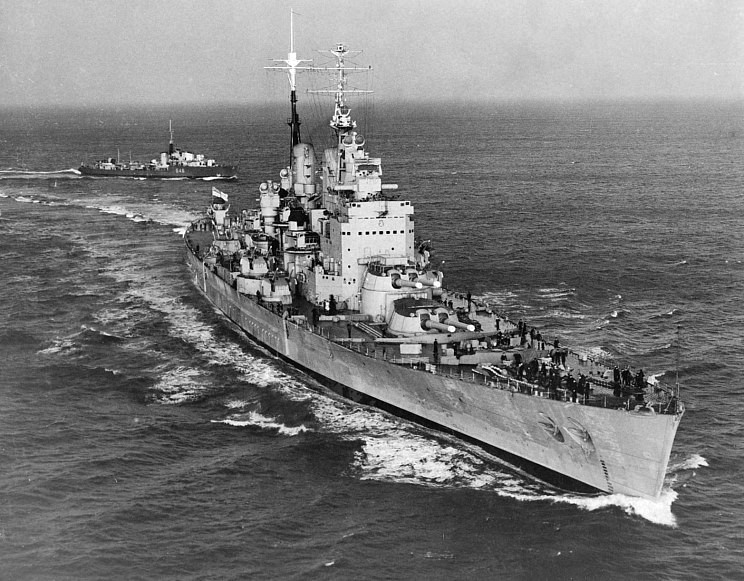
First sortie in 1946 with the destroyers Orwell, Obedient, Offa, Opportune, and Rotherham
She went on with her cruise, arriving at Cape Town on 17 February, escorted by the frigates Good Hope, Transvaal and Natal and leaving the Royal Family tour the country while ttraining with the South African Navy, completed by port visits. She set sail for home on 22 April via the islands of Saint Helena and Ascension, to Portsmouth on 11 May. Captain F. R. Parham replace Agnew on 29 May and by July, Vanguard was in overhaul at Devonport until August 1948. This was followed by another cruise with the Royal Family to Australia and New Zealand in January 1949 after an August shakedown cruise in the Mediterranean until 12 November. At this stage already some in the admirakty were looking a possible missile conversion.
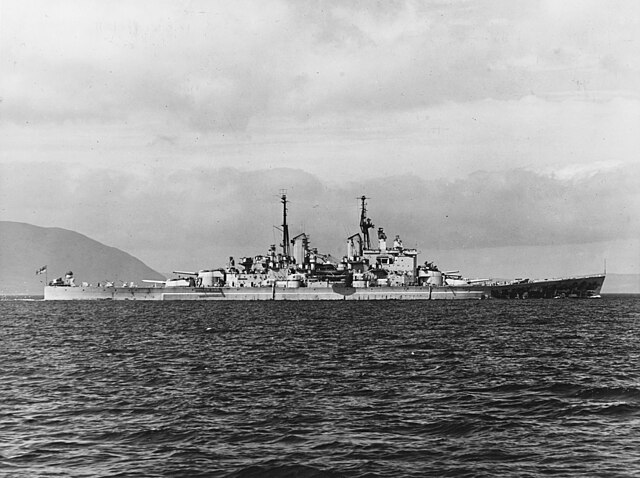
Vanguard in 1947
Old King George VI was advised to stop these cruises and there was no Royal Tour for 1949, while Va,guard became flagship, Admiral Sir Arthur Power, CiC Mediterranean Fleet by March 1949. She cruiser to Algeria, France, Italy, Cyprus, Libya, Lebanon, Greece and Egypt. Rear Admiral (also promoted) Parham was replaced by Captain G. V. Gladstone she Vanguard became flagship of the Home Fleet Training Squadron (Rear Admiral Edward Evans-Lombe) by November. After a cruise to Gibraltar, she helped the crew of a storm damaged French merchantman, SS Boffa, on 13 February 1950. By March, the battleship fired a salute to French Pdt. Vincent Auriol in state visit to Great Britain.
On 13 September 1950, Admiral Sir Philip Vian made her his flagship for exercises with the RCN and Mediterranean Fleet, the largest combined so far. On 19 December, Vian moved to HMS Indomitable. 10 February 1951 saw the carrier colliding with Vanguard when docked at Gibraltar. Vian returned on Vanguard during the carrier’s repair. She later “sank” the battleship during an exercise. Vanguard stopped at Genoa and Villefranche-sur-Mer. Bakc to Devonport on 14 March she started a new refit until May, and became Aflagship of the Home Fleet Training Squadron again (Rear Admiral R. M. Dick), anchored at the Isle of Portland. Indefatigable replaced her as she moved to drydock again for refit as tailored flagship of the Home Fleet, with new facilities.

Vanguard in 1949
By November King George VI announced her was planning a new cruise aboard, this time for his own health, and the Admiral’s was modified again. The ship departed under Captain John Litchfield from later December while in refit, learning on 6 February the King died. Vanguard sent an honor delegation to the funeral procession. After this, Vanguard started a post-refit shakedown cruise late February, sailing with the carriers HMS Implacable, Indomitable and minelayer Apollo, until 29 March. Flagship on 13 May (Admiral Sir George Creasy) she had personal shortages and was found with most of her turrets unmanned, ammunition limited. Her secondary guns could only fire starshell.
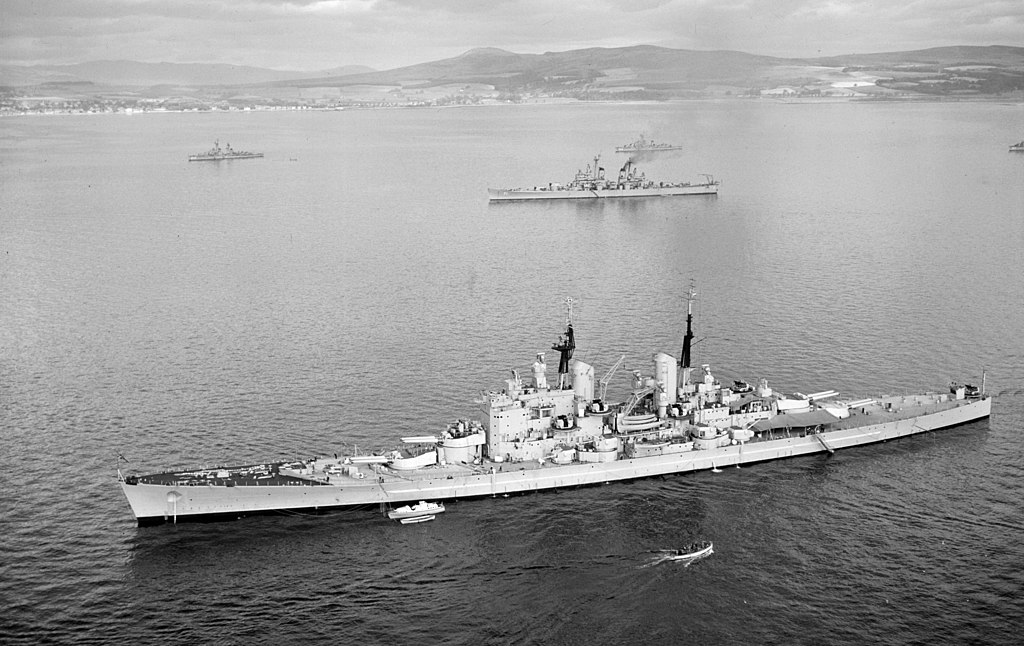
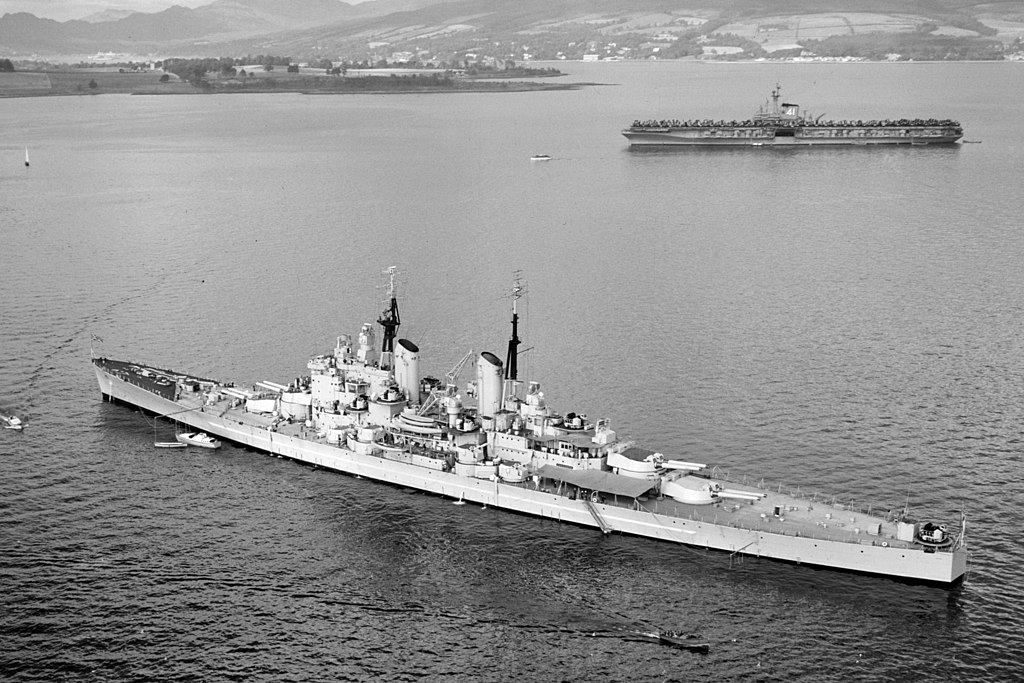
Vanguard in the Firth of Forth for combined exercises with the USN, NATO Operation Mainbrace, September 1952. USS Quincy (top), USS Midway (bottom).
She took part in exercises with the Netherlands and USN. Captain R. A. Ewing took command on 19 January 1953 and she ship returned to the Mediterranean, stopping for a short refit at Gibraltar. From 2 March she trained with British carriers and was back in Portsmouth by 25 March 1953. By June she was present in full regalia for the Queen Elizabeth’s Coronation Fleet Review at Spithead. In September, she took part in NATO’s Mariner in the Denmark Strait. Admiral Sir Michael Denny raised his colors on 5 January 1954 for Exercise Medflex (Dutch and French Navy) in March. She made afterwards ASW/AA exercises in the north see, stopping at Oslo and Kristiansand, then Helsingborg visited on 11 July by King Gustaf VI Adolf of Sweden.

Vanguard entering Rotterdam
Vanguard sailed to Devonport for her last refit (at a cost limited to £220,000). By February 1955 Defence Estimates some planned to have her converted as a “Sverdlov-class cruiser killer”, but the new team (Earl Mountbatten, Antony Eden) it was decided instead to maintain two extra cruisers. That meant Vanguard was placed in reserve after her refit, flagship of the Reserve Fleet under VADM Richard Onslow, on 28 November. She was stationed at Fareham Creek and she was shot in 1957 comedy film Carry on Admiral and then the 1960 “Sink the Bismarck!”, aboard, for the interiors of the bridges, Admiral’s Quarters, gun turrets portaying at the same time the interiors of Hood, Bismarck and King George V.
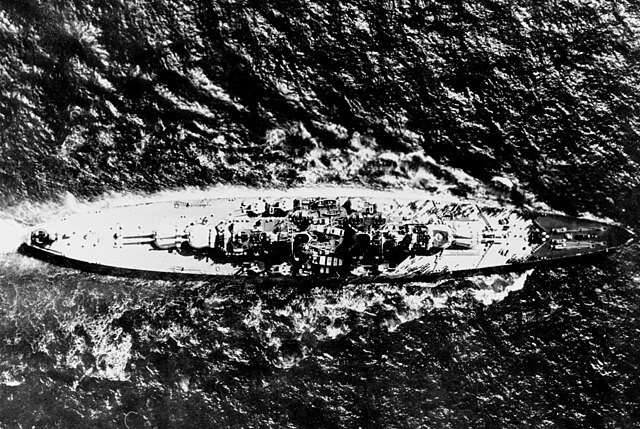
Overhead view
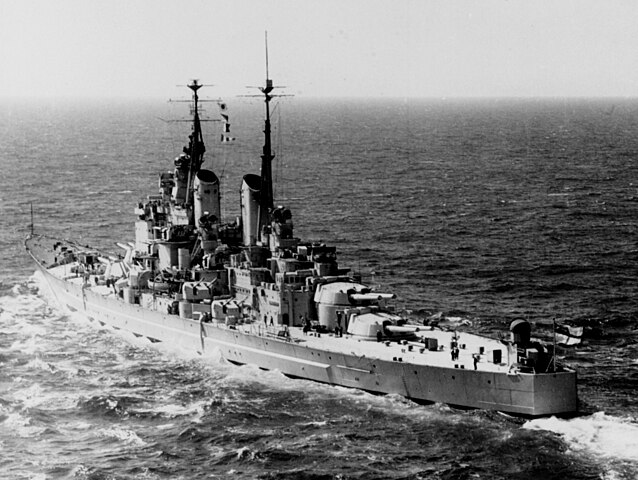
Stern view
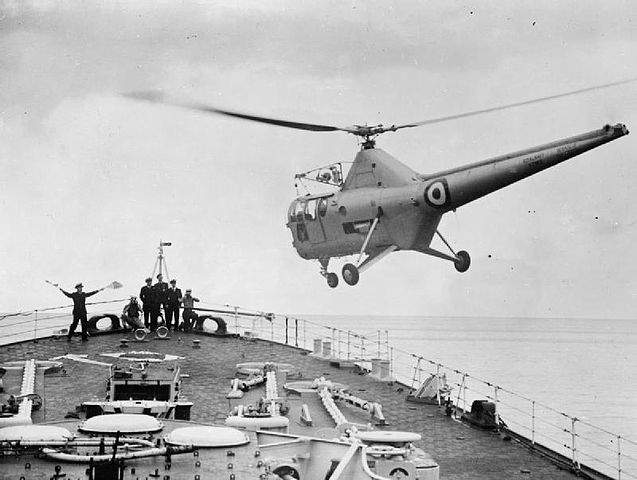
Helicopter landing
The end of the “last battleship”
On 9 October 1959 the Admiralty announced they estimated her obsolete, expensive to maintain and man. Decommissioned ceremony was held on 7 June 1960. She was put on auction, and eventuallt sold to BISCO for £560,000 and by 4 August 1960, scheduled to be towed to Faslane in Scotland. A massive crowd massed to see her passing by for her last voyage. She managed to ran aground near the Still & West pub and was pulled off by five tugboats, run aground again on the opposite shore, and eventually left Portsmouth, and after fiive days, Faslane. The yard anouced demolition complete by mid-1962 and for scientific purpose, she left 6-in thick pre-atomic steel plating (uncontaminated with radionuclides) to be reused at the Radiobiological Research Laboratory, Alverstoke, Gosport. The whole process was filmed in the “The Last Battleship”.
General assessment
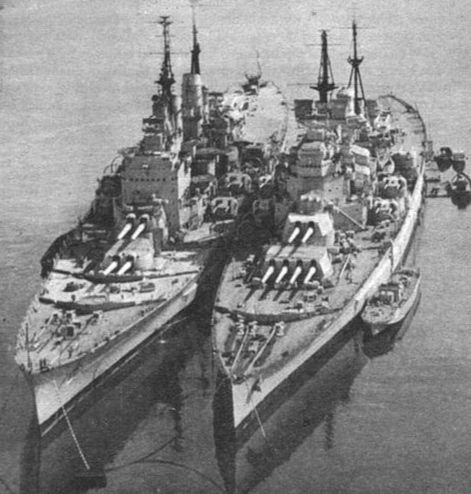
Vanguard side to side with HMS Duke of York.
In a sense, “last battleship”, she was. Indeed she was the last launched. But certainly not the last broken up. In fact of the postwar generation, she was the last in Britain, but was outlived by Jean Bart, Richelieu and the four Iowa class, while some earlier battleships, mothballed, were later preserved. So what Vanguard left behind ? By service alone, she did far better than Jean Bart, really completed in 1955 and active until 1957, then placed in reserve until 1970. Was she better in any way ?
Both were probably at the peak at the food chain in Europe -if air power could be negated- Perhaps Jean Bart had better radars and a more modern AA, but she was really completed years later. As for the combo 5.25-in/40 mm Bofors versus the “triplex” constituted by 130/127/57mm (after the latter were also upgraded Bofors) could be argued, it is true in both cases, they would have been 1959 easy meet for the new generation of cruise-missile armed Soviet bombers. In both cases missile conversions were studied (perhaps in less enthusiasm for Vanguard), and dropped. Vanguard’s sextuple 40 mm mounts, with dedicated radars and new fuses certainly were an impressive close quarter defence, but the lack of intermediate caliber could be critized. And when compared to other suvivors such as the Iowa class, this gap in AA defence was perhaps even more obvious. The latter replaced their former Bofors by the new twin 76mm AA, creating a well-rounded two-caliber defence between 5-in and 3-in.
Protection-wise, the Vanguard was the best of all British Battleships designs, and the fruit of ww2 lessons. She probably would have survived better than any of her contemporaries. Now, technology aside, was her a bargain for the British taxpayers in the postwar context ? Certainly not. Her usefulness was shifted as a “royal yacht”/”flagship” to justify her high cost of maintenance. But the latter was such her crew was reduced most of the time, she could man half her armament. As said above, she served from 1946 to 1960 so 14 years, which was far better than the French JB, and even that the four iowa class, in reserve after in Korea. In the cash-stipped context of postwar Britain, this was nothing less than miraculous. And she was a hoperful country’s ambassador after the war, certainly more a prestige ships in the eyes of the press and parliament than any carrier. “Showing the flag” on the four corners of the British Empire was perhaps one of her greatest contribution overall.
Read More/Src
Books
“Explosion Rips Ship”. The San Bernardino Daily Sun. Vol. 52. San Bernardino, California. Associated Press. 17 September 1945.
Brown, D. K. & Moore, George (2003). Rebuilding the Royal Navy: Warship Design Since 1945. NIP
Campbell, John (1985). Naval Weapons of World War II. NIP
Chakelian, Anoosh (15 May 2012). “86 Surprising Facts About Queen Elizabeth II”. Time.
Cowling, Giles. “From Land, Sea and Air”. Defence Management Journal. 31.
Garzke, William H. Jr. & Dulin, Robert O. Jr. (1980). British, Soviet, French, and Dutch Battleships of World War II. Jane’s.
Grove, Eric J. (2005). The Royal Navy Since 1815: A New Short History. Basingstoke, UK: Palgrave MacMillan.
Lenton, H. T. (1998). British & Empire Warships of the Second World War. NIP
McCart, Neil (2001). HMS Vanguard 1944–1960: Britain’s Last Battleship. Liskeard, Cornwall: Maritime Books.
Order of Splendor (14 March 2013). “The Vanguard Rose Brooch”. From Her Majesty’s Jewel Vault.
Parkes, Oscar (1990) [1966]. British Battleships, Warrior 1860 to Vanguard 1950: A History of Design, Construction, and Armament (New & rev. ed.). NIP
Pigott, Peter (2005). Royal Transport: An Inside Look at the History of Royal Travel. Toronto: Dundurn Press. ISBN 978-1-55002-572-9.
Raven, Alan & Roberts, John (1976). British Battleships of World War Two. NIP
Royal Museum Greenwich. “The Coronation Review, 15 June 1953”. collections.rmg.co.uk.
Links
hms-vanguard.co.uk/
maritimequest.com/
web.archive.org VanguardOct07.pdf
maritime.org/
en.wikipedia.org HMS_Vanguard_(23)
navypedia.org/ brit_bb1_vanguard.htm
HMS_Vanguard_ship_1946
Videos
See also: HMS Vanguard – Britain’s Last Battleship
Model Kits
on scalemates.com
Large builder’s model replica on sdmodelmakers.com
modelshipmaster.com

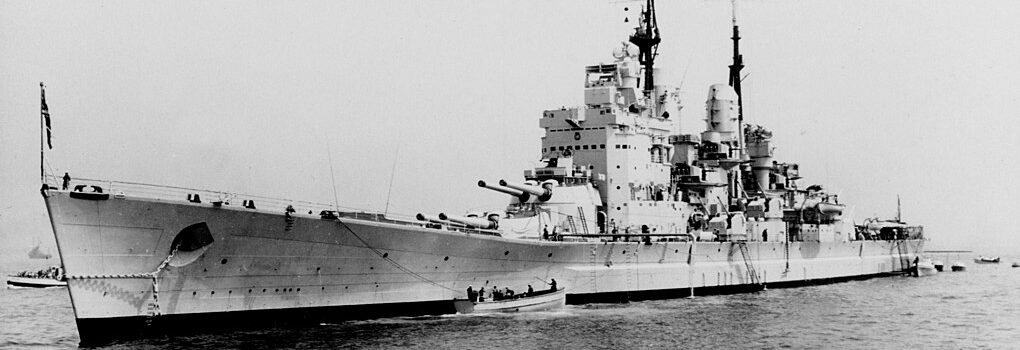

 Latest Facebook Entry -
Latest Facebook Entry -  X(Tweeter) Naval Encyclopedia's deck archive
X(Tweeter) Naval Encyclopedia's deck archive Instagram (@navalencyc)
Instagram (@navalencyc)





 French Navy
French Navy Royal Navy
Royal Navy Russian Navy
Russian Navy Armada Espanola
Armada Espanola Austrian Navy
Austrian Navy K.u.K. Kriegsmarine
K.u.K. Kriegsmarine Dansk Marine
Dansk Marine Nautiko Hellenon
Nautiko Hellenon Koninklije Marine 1870
Koninklije Marine 1870 Marinha do Brasil
Marinha do Brasil Osmanlı Donanması
Osmanlı Donanması Marina Do Peru
Marina Do Peru Marinha do Portugal
Marinha do Portugal Regia Marina 1870
Regia Marina 1870 Nihhon Kaigun 1870
Nihhon Kaigun 1870 Preußische Marine 1870
Preußische Marine 1870 Russkiy Flot 1870
Russkiy Flot 1870 Svenska marinen
Svenska marinen Søværnet
Søværnet Union Navy
Union Navy Confederate Navy
Confederate Navy Armada de Argentina
Armada de Argentina Imperial Chinese Navy
Imperial Chinese Navy Marinha do Portugal
Marinha do Portugal Mexico
Mexico Kaiserliche Marine
Kaiserliche Marine 1898 US Navy
1898 US Navy Sovietskiy Flot
Sovietskiy Flot Royal Canadian Navy
Royal Canadian Navy Royal Australian Navy
Royal Australian Navy RNZN Fleet
RNZN Fleet Chinese Navy 1937
Chinese Navy 1937 Kriegsmarine
Kriegsmarine Chilean Navy
Chilean Navy Danish Navy
Danish Navy Finnish Navy
Finnish Navy Hellenic Navy
Hellenic Navy Polish Navy
Polish Navy Romanian Navy
Romanian Navy Turkish Navy
Turkish Navy Royal Yugoslav Navy
Royal Yugoslav Navy Royal Thai Navy
Royal Thai Navy Minor Navies
Minor Navies Albania
Albania Austria
Austria Belgium
Belgium Columbia
Columbia Costa Rica
Costa Rica Cuba
Cuba Czechoslovakia
Czechoslovakia Dominican Republic
Dominican Republic Haiti
Haiti Hungary
Hungary Honduras
Honduras Estonia
Estonia Iceland
Iceland Eire
Eire Equador
Equador Iran
Iran Iraq
Iraq Latvia
Latvia Liberia
Liberia Lithuania
Lithuania Mandchukuo
Mandchukuo Morocco
Morocco Nicaragua
Nicaragua Persia
Persia San Salvador
San Salvador Sarawak
Sarawak Uruguay
Uruguay Venezuela
Venezuela Zanzibar
Zanzibar Warsaw Pact Navies
Warsaw Pact Navies Bulgaria
Bulgaria Hungary
Hungary

 Bundesmarine
Bundesmarine Dutch Navy
Dutch Navy Hellenic Navy
Hellenic Navy Marina Militare
Marina Militare Yugoslav Navy
Yugoslav Navy Chinese Navy
Chinese Navy Indian Navy
Indian Navy Indonesian Navy
Indonesian Navy JMSDF
JMSDF North Korean Navy
North Korean Navy Pakistani Navy
Pakistani Navy Philippines Navy
Philippines Navy ROKN
ROKN Rep. of Singapore Navy
Rep. of Singapore Navy Taiwanese Navy
Taiwanese Navy IDF Navy
IDF Navy Saudi Navy
Saudi Navy Royal New Zealand Navy
Royal New Zealand Navy Egyptian Navy
Egyptian Navy South African Navy
South African Navy






























 Ukrainian Navy
Ukrainian Navy dbodesign
dbodesign
I went aboard the Vanguard in 1949 when she was in Devonport. I was in the Cubs and our Scout Leader was a Naval Chaplain. We also want aboard the Amethyst that had just returned from the Yangste incident. She was moored astern of the Vanguard.